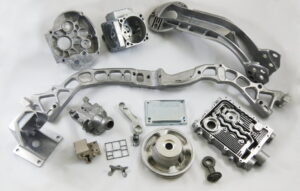The equal port had eight information lines to control. On the off chance that the stepper engine was controlled legitimately by protoype manufacturers china, with the equal port providing voltage for each stage, the control would require a multi-plexer and programming to precisely control the stages. During the exploration stage, the group went over coordinated circuit chips which could drive stepper engines with less sources of info.
The stepper engine picked had six wires and along these lines had unipolar windings. All Electronics had a driver IC, the EDE1200, which would work and in this way could be gathered into similar shipment of gadgets with the engine to save money on delivery costs by custom precision machining solutions factory.
The decision of an engine with a 0.25 in. shaft made choosing a planning pulley a lot simpler. Past exploration had demonstrated that little planning pulleys and belts were accessible from McMaster-Carr.
From their list, the gathering sifted through all 0.25 in. inward distance across pulleys. Belt width was kept at 0.25 in. to guarantee it very well may be safely attached to the rail carriages and that it would be moving. At last, the littlest pitch distance across that was left accessible was chosen. This would help keep the goal little. The outcome was part number 1375K 39 which was all the more expensive at $8.86 each for the plan prerequisite of six absolute pulleys.
With the pulley decided, finding the comparing belt was clear. With the plotter demonstrated in a CAD model, it was anything but difficult to check a belt length against the model. A belt that would coordinate the pulley was of the MXL arrangement. It must be 0.25 in. wide. McMaster had a 38.6 in. long belt which worked in the model. The 1679K63 belt at $2.71 each was chosen.
The solenoid for the pen was found at Gateway Electronics in St. Louis, Missouri. It was important for an ordering system which was isolated from the solenoid. It has a revolving activity which was proposed for a four-bar component, yet was changed to activate the pen straightforwardly. Cost was under $5.
The excess mechanical segments were bought from Lowes. The gathering went on an outing there in light of the plan looking out what parts were doable. The strong model gave measurements to help segment choice, yet a few things must be dictated by what was accessible.
The electrical segments were fundamentally bought from All Electronics in two shipments to solidify dispatching charges. Substitution and ignored segments were requested later from Digi-Key. china medical equipment cnc metal machining parts to build the cooling framework were bought from the Electronics Exchange in Bridgeton, Missouri.
With the significant parts of the plotter previously chose, the actual connection of these segments should have been recognized. It was concluded that virtual gathering of the segments would be the most ideal approach to additionally characterize what explicit sizes and segments would be required. With the help of the Igus Web website, the segments that were requested through their organization were downloaded in IGES design.
The excess parts of the framework were estimated utilizing a caliper and a ruler. These measurements were then used to make SolidWorks parts documents. SolidWorks was picked on the grounds that it was promptly accessible to every individual from the group. The stepper engines, pulleys, belts, and rails were made in SolidWorks. Chinese prototyping manufacturers are strong outlines of a couple of the parts made in SolidWorks.
This article is from http://www.prototypechina.com.
